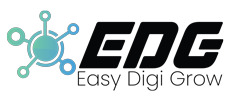Creating an inclusive and accessible website design is essential for creating a user-friendly experience. It is not only about making sure that your website is accessible to all users but also about ensuring that the user experience is enjoyable and efficient. This blog post will discuss the importance of accessibility in web design and provide tips on how to ensure an inclusive user experience.
By the end of this blog post, you should have a better understanding of the importance of accessibility in website design and be able to create a more inclusive user experience for your websites.
Why Accessibility Website Design Matters?
Accessible website design is of utmost importance for your website as it ensures that individuals with disabilities can access, navigate, and interact with web content equally with others. Here are some key reasons why accessible website design matters:
- Equal Access for All: Accessible websites provide equal access to information and services for individuals with disabilities. It eliminates barriers and allows everyone to participate fully in the digital realm, regardless of their abilities.
- Legal Requirements: Accessibility in most countries is mandated by the law. Organizations, both public and private, are required to comply with accessibility standards to ensure inclusivity and prevent discrimination based on disabilities.
- Expanded User Base: By designing an accessible website, you broaden your potential user base. People with disabilities, estimated to be over a billion worldwide, represent a significant market segment.
- Improved User Experience: Accessibility features not only benefit users with disabilities but also enhance the experience for all users. Well-designed accessibility features make the website more user-friendly for everyone.
- Search Engine Optimization: Many accessibility practices align with SEO best practices. For example, providing descriptive alternative text for images not only benefits visually impaired users but also improves search engine indexing and ranking.
Also, go through our Top 20 Website Design Trends that will help you to stay ahead of the game
Considerations for Users with Disabilities when Designing an Accessible Website
- Visual Disabilities: Provide text alternatives for images, use descriptive headings, and ensure sufficient color contrast for readability.
- Hearing Disabilities: Offer captions or transcripts for multimedia content, provide visual cues for audio alerts, and avoid relying solely on audio instructions.
- Motor Disabilities: Ensure that interactive elements are easily operable using a keyboard, provide a sufficient clickable area for links and buttons, and minimize the need for precise mouse movements.
- Cognitive Disabilities: Use clear and concise language, organize content in a logical manner, provide simple instructions, and avoid cluttered layouts that can overwhelm users.
By incorporating these considerations into your website design, you create an inclusive and user-friendly experience for individuals with disabilities, fostering equality and diversity in the online world.
Understanding the User
To achieve accessibility in website design, it is crucial to understand your target audience and their diverse needs. Users possess varying abilities, preferences, and technological literacy levels. By embracing a user-centric approach, you can create a website that accommodates a wide range of users.
Consider the following questions while crafting your website’s accessibility features:
- How can you make your content understandable for users with cognitive disabilities?
- Are your navigation menus intuitive and easy for individuals with motor impairments?
- Are your images adequately described for users with visual impairments who rely on screen readers?
- Can users adjust the font size or color contrast to suit their preferences?
- Is your website compatible with assistive technologies like screen readers and speech recognition software?
Understanding the unique needs of your audience allows you to tailor your website design accordingly and provide an exceptional user experience for everyone.
Check out our guide on the role of visuals in web design for a better user experience.
Accessibility Features for Website Design

To ensure an inclusive user experience, it is essential to incorporate accessibility features into your website design. Consider the following website design strategies:
- Semantic HTML: Use proper HTML tags and elements to structure your content. This helps screen readers and search engines understand your website accurately.
- Alternative Text: Provide descriptive alt text for images to convey their meaning to users who cannot see them. This allows screen readers to describe the image to visually impaired users.
- Captions and Transcripts: Include captions or transcripts for videos and audio content. This benefits users with hearing impairments who rely on written content to understand multimedia elements.
- Keyboard Accessibility: Ensure that all website functionalities can be accessed using a keyboard alone. Some users cannot operate a mouse due to motor disabilities and rely on keyboard navigation.
- Color Contrast: Use color combinations that provide sufficient contrast between text and background. This enables users with visual impairments or color blindness to read the content easily.
- Form Input Validation: Implement clear error messages and validation cues in forms. This assists users with cognitive disabilities in completing forms accurately.
- Descriptive Link Text: Use descriptive link text that provides meaningful information about the destination page. Avoid generic phrases like “click here” and instead use descriptive terms that convey the purpose of the link.
- Consistent Page Layout: Maintain a consistent page layout throughout your website to provide familiarity and ease of use. Users with cognitive disabilities or learning difficulties benefit from predictable and consistent page structures.
- Text Resizing: Enable users to adjust the text size on your website easily. This accommodates users with visual impairments or those who prefer larger text for better readability.
- Consistent Navigation: Design clear and consistent navigation menus to facilitate easy navigation for all users. Providing a logical structure and labeling navigation elements clearly benefits individuals with cognitive disabilities and those using screen readers.
Enhance Accessibility Without Compromising Website Performance
- Lazy Loading: Implement lazy loading for images and multimedia content. This technique delays the loading of non-visible elements, improving page load times while providing accessibility features once they come into view.
- Cache Optimization: Leverage browser caching to store static resources locally on users’ devices. This reduces server requests and improves website speed for repeated visits, benefiting all users, including those relying on assistive technologies.
- Responsive Design: Create a responsive website design that adapts to different screen sizes and devices. This ensures that users with disabilities using various assistive technologies can access your content seamlessly.
- Use Web Fonts Wisely: Opt for web fonts that load quickly and do not significantly impact page load times. Prioritize legibility and readability to benefit users with visual impairments or dyslexia.
- Minify CSS and JavaScript: Minify and compress CSS and JavaScript files to reduce their size and improve website performance. This allows users, including those with slower internet connections, to navigate your site more efficiently.
Don’t forget to take a look at our guide on effective website redesign strategies that can help you maximize your web traffic!
Guidelines for Compliance with Accessibility Standards
To ensure compliance with accessibility standards, here are some guidelines to follow:
- WCAG 2.0 and WCAG 2.1: Familiarize yourself with the Web Content Accessibility Guidelines (WCAG) 2.0 and 2.1. These internationally recognized standards provide comprehensive guidelines for creating accessible web content.
- Keyboard Accessibility: Ensure that all functionality on your website can be accessed using a keyboard alone. Users with motor disabilities may rely on keyboard navigation and need to interact with your site effectively.
- Alternative Text for Images: Provide alternative descriptive text (alt text) for all images. Alt text allows users with visual impairments to understand the content of the image through screen readers.
- Color Contrast: Ensure that there is adequate contrast between text and background elements. This helps users with visual impairments or color blindness read and distinguish content easily.
- Heading Structure: Use proper heading tags (H1, H2, etc.) to structure your content. This helps users navigate through your website using assistive technologies like screen readers.
- Accessible Forms: Design forms with accessibility in mind. Include clear labels, provide instructions, and use error messages that are perceivable by all users.
- Audio and Video Accessibility: Provide captions, transcripts, or audio descriptions for multimedia content such as videos and audio files. This benefits users with hearing impairments.
- Focus Indicators: Ensure that there are clear visual indicators when an element is in focus. Users who navigate using keyboards rely on these indicators to understand their location on the page.
- Skip Links: Include skip links at the beginning of the page to allow users to bypass repetitive elements and directly access the main content.
- User Feedback and Accessibility Statements: Encourage users to provide feedback on accessibility barriers they may encounter. Display an accessibility statement on your website, outlining your commitment to accessibility and providing contact information for accessibility-related inquiries.
By adhering to these guidelines, you can create an accessible website that provides an inclusive user experience for all visitors.
Final Thoughts
By prioritizing accessible website design, you can ensure that no one is left behind and individuals with disabilities can fully engage with online content and services.
EasyDigiGrow is a leading web development company that specializes in designing accessible websites. With our expertise and dedication to accessibility, we can assist you in crafting a website that meets the highest standards of inclusivity. Start your accessibility journey today with EasyDigiGrow and make a positive impact on the lives of individuals with disabilities.
FREQUENTLY ASKED QUESTIONS
- What is inclusive user experience?
Inclusive user experience refers to accessible website design that is accessible to all users, regardless of their disabilities or limitations. It aims to ensure that everyone can navigate, interact with, and enjoy the content and services provided on a website.
- How can I create an accessibility statement for my website?
To create an accessibility statement, outline your commitment to accessibility, provide contact information for accessibility-related inquiries, and encourage users to provide feedback on any barriers they may encounter.
- Is it necessary to provide audio descriptions for video content on my website?
Providing audio descriptions for video content is beneficial for users with visual impairments. Audio descriptions describe the visual elements of the video, allowing them to understand the content.
- How can I make my website accessible to users with color blindness?
To make your website accessible for users with color blindness, ensure sufficient color contrast between text and background elements. Use color combinations that are distinguishable for individuals with different types of color blindness.
- Are there any resources or organizations that provide further guidance on website accessibility?
Yes, there are several resources available for creating accessible website design, such as the Web Accessibility Initiative (WAI) by the World Wide Web Consortium (W3C), the Accessible India Campaign by the Government of India, and various accessibility-focused organizations and communities that provide guidance and support for website accessibility.
 seolounge
seolounge


